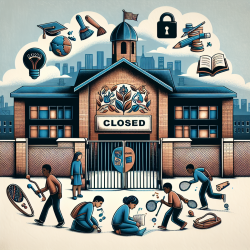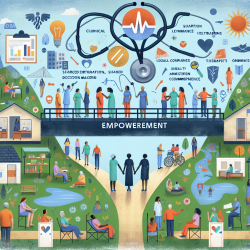Introduction
As speech-language pathologists, we are committed to fostering environments that support the holistic development of children. Recent research, "School closures significantly reduced arrests of black and latinx urban youth," provides a data-driven perspective on how environmental changes can impact youth outcomes, particularly in urban settings. This blog will explore the implications of these findings and how practitioners can leverage this knowledge to improve their practice.
Understanding the Research
The study conducted by Simes et al. (2023) analyzed arrest records across four U.S. cities and found that school closures during the COVID-19 pandemic led to a significant reduction in youth arrests, particularly among Black and Latinx populations. The arrest rates for Black youth dropped from 43.6 to 16.8 per 100,000, while for White youth, it declined from 4.6 to 2.2 per 100,000. These findings highlight the role of schools as sites of surveillance and criminalization for youth of color.
Key Findings
- Youth arrest rates fell by 54% during remote learning periods.
- Black and Latinx youth arrest densities near schools were significantly higher than those for White youth.
- School closures reduced police activity around schools, which are often hotspots for youth arrests.
Implications for Practitioners
For practitioners working with children, these findings underscore the importance of understanding the broader social contexts that affect youth behavior and outcomes. Here are some strategies to consider:
- Advocacy for Safe Spaces: Advocate for policies that create safe, supportive environments in schools that do not rely on policing as a primary means of discipline.
- Collaborative Efforts: Work with educators, policymakers, and community leaders to develop alternative disciplinary measures that focus on restorative practices rather than punitive actions.
- Research and Data: Encourage further research into the impact of school environments on youth behavior, particularly for marginalized groups.
Encouraging Further Research
While the study provides valuable insights, it also raises questions about the long-term effects of reduced police contact on youth development. Practitioners should consider participating in or supporting research that explores these outcomes further. Understanding the nuances of how school environments contribute to youth criminalization can inform more effective interventions and policies.
Conclusion
The research by Simes et al. (2023) offers a compelling argument for re-evaluating the role of schools in youth criminalization. As practitioners, we have the opportunity to advocate for systemic changes that prioritize the well-being and development of all children, particularly those from marginalized communities. By leveraging data-driven insights, we can contribute to creating environments that support positive outcomes for youth.
To read the original research paper, please follow this link: School closures significantly reduced arrests of black and latinx urban youth.










